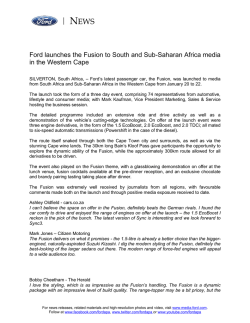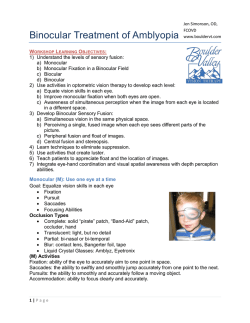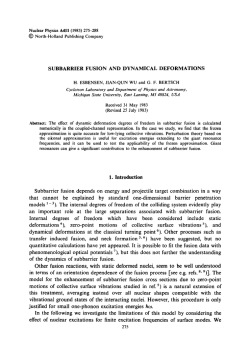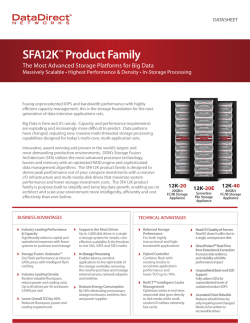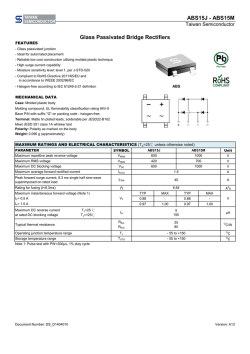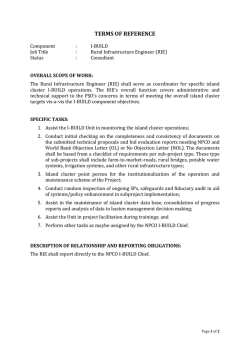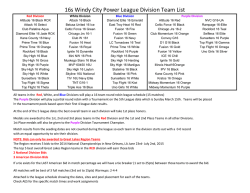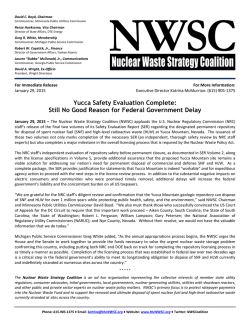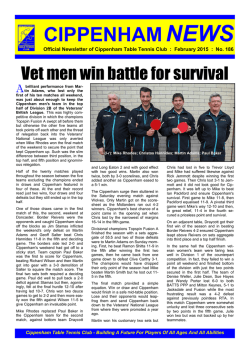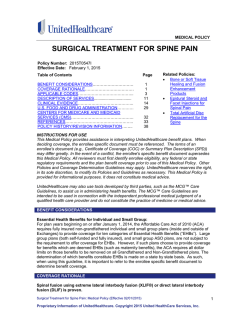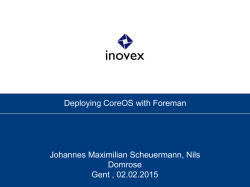
Development status of condensed cluster fusion
Uncorrected proof SPECIAL SECTION: LOW ENERGY NUCLEAR REACTIONS Development status of condensed cluster fusion theory Akito Takahashi* Technova Inc., 1-1 Uchisaiwai-cho-1, Chiyoda-ku, Tokyo, 100-0011 Japan The condensed cluster fusion theory has been developed since 1989, under the view that dynamic ordering processes of confined transient clusters of D(H)-particles in catalytic surface sites, vacancies and global mesoscopic potential well of metal nanoparticles may induce simultaneous multi-body fusion reactions. One thorough answer is obtained for the condensation motion of clusters under platonic symmetry like 4D(H)/ TSC, 6D(H)/RDC and 8D(H)/RDC and their fusion reaction rates. Theoretical analysis for initial dynamic clustering process on/in catalytic sites is still speculative and under searching a technique to combine the electron density functional method and the QM Langevin method. Keywords: Catalytic sites, condensed cluster fusion, fusion rate formulas, 4D fusion, 4He ash, 4H WS fusion, QM-Langevin method. Introduction THE present author has conceived1 a concept in which the ordering/constraint conditions of particles (namely deuterons, protons and electrons) in condensed matter containing deuterium (D) and/or protium (H) should make unique ‘hitherto unknown’ multi-body D(H)-cluster fusion reactions. These new reactions occur under the dynamicconstraint-ordering condition of surface/solid-state physics of D(H) + condensed matter. They differ from the known fusion reactions in high-temperature plasma that are always two-body reactions as p–d, d–d, d–t, d–3He and take place in random free-particle motions. Here, D(H)-cluster includes two-deuteron (or protons) systems as d–e–d (p– e–p) and d–e–e–d (p–e–e–p), as well as 3D(H), 4D(H), 6D(H) and so forth. Here e denotes electron, D denotes deuteron (d) + electron (e), and H does p + e too. In conventional nuclear physics view, the two-body collision process is a predominant mechanism for nuclear fusion and the multi-body nuclear interaction events are negligible. However, the present author has found by the QM-Langevin code analysis that platonic symmetry D-clusters could make rapid (1–5 fs) condensation motion to reach ‘collapse’ getting into nuclear strong interaction range (several fm) with enhanced Coulomb barrier penetration probability and could induce almost 100% 4D fusion per TSC formation for the case of a 4D-cluster2–4. Similar collapsed condensation would happen for 6D and 8D systems too. The theory was extended for light hydrogen (proton) system (see references in Takahashi)1. He has also found that 2 D(H) systems as d–e–d three-body confinement cannot make enhanced barrier penetration even at the minimum d–d (or p–p) approaching distance for a short period of dynamic motion. Only larger platonic clusters than 3D(H) can have the collapsing one – through condensation4. The prediction of final nuclear products (ash) was done5–6 based on the nucleon-halo model for intermediate compound states, like 8Be* by the 4D/TSC-fusion and 4Li* by the 4H/TSC WS (weak–strong rapid cascade) fusion5,6. Especially, the proposed excitation energy damping model of BOLEP (burst-of-lowenergy-photons) via nucleon-halo state rotation/vibration modes5 is thought to be the mechanism for producing free of hard radiation, a helium ash product with excess heat evolution in metal–deuterium systems6. Predicted discrete peaks of minor alpha-emission agreed quite well with Russian experiment. The macroscopic fusion rate by the CCF (condensed cluster fusion) theory is given by the product of two rates as Macroscopic fusion rate = 〈D(H) – cluster formation rate〉 × 〈 microscopic fusion yield per cluster〉. (1) The microscopic fusion yield for the collapsing cluster is given by the following Fermi’s first golden rule for trapped particles with dynamic (time-dependent) trapping potential well at catalytic sites, while the D(H)-cluster formation rate can be separately modelled/estimated (study is under way). 〈 Fusion rate〉 = 2 〈ψ nf W (r ) ψ ni 〉Vn ⋅ 〈ψ cf |ψ ci 〉Vn , = (2) where ψni and ψnf are the inter-nuclear (nucleon-interaction for d-cluster) wave-functions for the initial and the final respectively. ψci and ψcf are the outer-nuclear wavefunctions in the electro-magnetic (or Coulombic) field respectively, for the initial and final states of interaction. Vn is the effective volumetric domain of nuclear interaction by strong (or weak) force given approximately as Vn ≈ 4π Rn2 π , (3) *e-mail: [email protected] CURRENT SCIENCE, VOL. 108, 2015 1 Uncorrected proof SPECIAL SECTION: LOW ENERGY NUCLEAR REACTIONS where Rn is the radius of nuclear-interaction surface, and λ-bar-pi is the ‘reduced’ Compton wavelength (1.4 m) of pion as virtual force-exchange boson for strong interaction. (In the case of weak interaction, we replace it with the reduced Compton wavelength of weak boson, 2.5 m). W(r) is the imaginary part of nuclear optical potential, which is the main factor of strong (or weak) interaction near around the interaction surface r = Rn. To estimate a fusion rate by eq. (2), we need to calculate two ‘adiabatic’ terms. One is the second term on the right side of the equation. This is the effective QM wavefunction weight for the first term of the inter-nuclear fusion rate7. In an approximate treatment (the HMEQPET method1,2), this second term is calculated using the WKB approximation with Gamow integral, called the barrier penetration proability. For the second calculation, the approximate estimation of the first term 〈W〉, an empirical approach with PEF (pion exchange force) values was used2,7,8, Using the QM-Langevin calculation for the collapsing condensation motion of 4D(H)-clusters and the HMEQPET2,3 (heavy mass electronic quasi-particle Figure 1. Simplified image of 4D/TSC condensation/collapse/4Dfusion/4He-generation. Figure 2. A simplified image of surface catalytic site of metal nanoparticle for 4D/TSC (t = 0) formation in a small dynamic process. 2 expansion theory), time-dependent barrier penetration probabilities and 4D fusion yield per cluster formation were numerically estimated to give 100% 4D-fusion yield per 4D/TSC (t = 0) formation at a catalytic site. A simple image of condensation/collapse/strong interaction/final state products is shown in Figure 1 for the case of 4D/TSC. The next problem under study is how and where D(H)platonic dynamic clusters could be formed and with what rates. We are proposing models of catalytic sites on the surface of a metal nanoparticle such as Pd, PdNi-binary composite, CuNi-binary composite, as well as lattice vacancies1. A simplified image of 4D/TSC (t = 0) formation on Pd or PdNi nanoparticle surface is shown in Figure 2. To solve the dynamic cluster formation process, we need an approach similar to the time-dependent electron density functional method. The QM mathematics there is much more complicated for solving time-dependent manybody system under mesoscopic D(H) trapping potential. We may need a step-by-step approach with many divided adiabatic states of dynamic processes such as: (i) Surface H2 (D2) adsorption. (ii) Oscillation in trapped potential in the second modified trapping potential for the next incoming H2 or D2 molecule. (iii) formation rate of transient H(D)-cluster, competition of its dissociation and cluster condensation. (iv) Penetration of dissociated H and D into inner-trapping sites (O-sites and T-sites, for instance) of metal nanoparticles. (v) Nonlinear oscillation of trapped H(D) in global mesoscopic potential well (GMPW). (vi) Transient formation of platonic cluster by nonlinear oscillation. (vii) Estimation of CCF rates, etc. We are considering a technique to combine the electron density functional theory and the QM-Langevin theory for quasi-static and time-dependent complex systems. More detailed information is available in the literature1–8. 1. Takahashi, A., Physics of cold fusion by TSC theory. J. Phys. Sci. Appl., 2013, 3, 191–198. 2. Takahashi, A., The basics of deuteron cluster dynamics as shown by Langevin equation. In Low Energy Nuclear Reaction Source Book, American Chemical Society, 2009, vol. 2, pp. 193–217. 3. Takahashi, A. and Yabuuchi, N., Study on 4D/TSC condensation motion by non-linear Langevin equation. In LENRSB 1, American Chemical Society, 2008, pp. 57–83. 4. Takahashi, A. and Rocha, D., D(H)-cluster Langevin code and some calculated results. In Proceedings of JCF14, 2014, pp. 113–140; http://vixra.org/abs/1401.0202). 5. Takahashi, A. and Rocha, D., Nucleon hallo model of 8Be*. In Proceedings of JCF-13, 2013, pp. 10–31; http://jcfrs.org/file/jcf13proceedings.pdf 6. Takahashi, A., Nuclear products of cold fusion by TSC theory. In Proceedings of ICCF18; http://vixra.org/abs/1309.0072). 7. Takahashi, A., Fusion rates of bosonized condensates. JCMNS, 2007, 1, 62–85. 8. Takahashi, A., Kinetic reaction energy of cold fusion. In Proceedings of JCF-12, JCF-12-7, 2013, pp. 67–76; http://jcfrs.org/file/ jcf13-proceedings.pdf CURRENT SCIENCE, VOL. 108, 2015
© Copyright 2026
